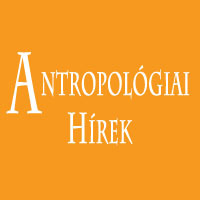Meet the mummified Polar beauty, her long eyelashes and hair still intact after 900 years
http://siberiantimes.com/science/casestudy/news/meet-the-mummified-polar-beauty-her-long-eyelashes-and-hair-still-intact-after-900-years/
Elveszett emberfaj nyoma bujkál egy afrikai populáció nyálában
http://www.ng.hu/Tudomany/2017/07/24/Elveszett-emberfaj-nyoma-bujkal-egy-afrikai-populacio-nyalaban
Így nézett ki 4000 évvel ezelőtt egy ételdoboz
http://mult-kor.hu/igy-nezett-ki-4000-evvel-ezelott-egy-eteldoboz-20170727
Archaeologists find key to tracking ancient wheat in frozen Bronze Age box
https://phys.org/news/2017-07-archaeologists-key-tracking-ancient-wheat.html
Early human's ability to survive through prolonged arid areas in southern Africa
https://phys.org/news/2017-07-early-human-ability-survive-prolonged.html
Cultural flexibility was key for early humans to survive extreme dry periods in southern Africa : The ability to be flexible through the innovation of technology helped early humans to survive prolonged periods of pronounced aridification
https://www.sciencedaily.com/releases/2017/07/170726102921.htm
Skull of 1,000 year old Arctic chieftain's infant heir found encased in Persian bronze bowl
http://siberiantimes.com/science/casestudy/news/skull-of-1000-year-old-arctic-chieftains-infant-heir-found-encased-in-persian-bronze-cup/
Bronze Age Iberia received fewer Steppe invaders than the rest of Europe : An analysis of ancient DNA recreates the genetic history of Portugal and Spain
https://www.sciencedaily.com/releases/2017/07/170727141536.htm
Canaanites Live : DNA Reveals Fate of Biblical People
https://www.livescience.com/59967-canaanites-were-ancestors-of-lebanese.html
Entirely non-alien child with cranial deformation found in Crimea
http://www.thehistoryblog.com/archives/48231
Deformált gyermekkoponyára bukkantak a Krím-félszigeten
http://mult-kor.hu/deformalt-gyermekkoponyara-bukkantak-a-krim-felszigeten-20170731
Érdekes
Füst, lefejezés, szexrabszolgák és hajók – hogyan temették el halottaikat a vikingek?
http://mult-kor.hu/fust-lefejezes-szexrabszolgak-es-hajok-hogyan-temettek-el-halottaikat-a-vikingek-20170725
Furcsa győztesek : Nomád harcosok, akik inkább nem alapítottak birodalmat
http://ntf.hu/index.php/2017/07/30/furcsa-gyoztesek-nomad-harcosok-akik-inkabb-nem-alapitottak-birodalmat/


